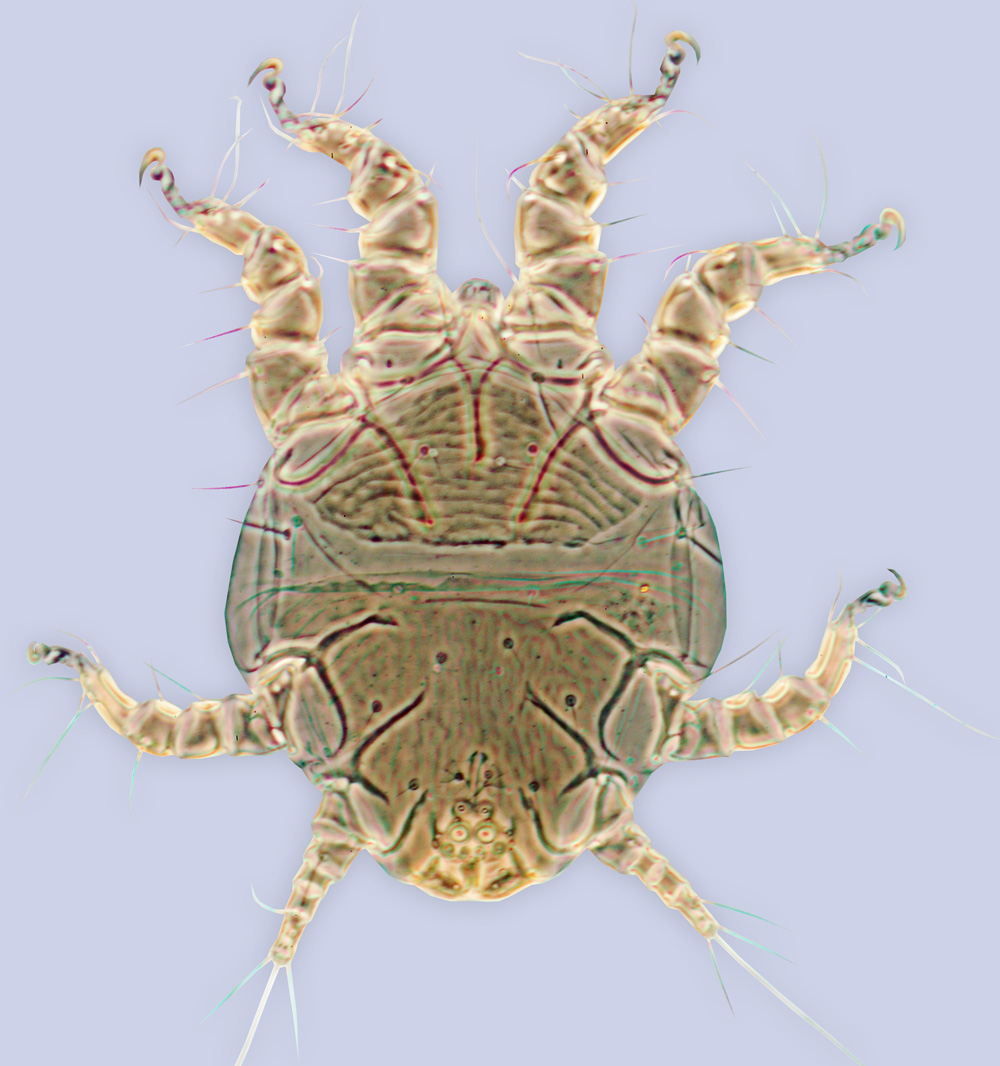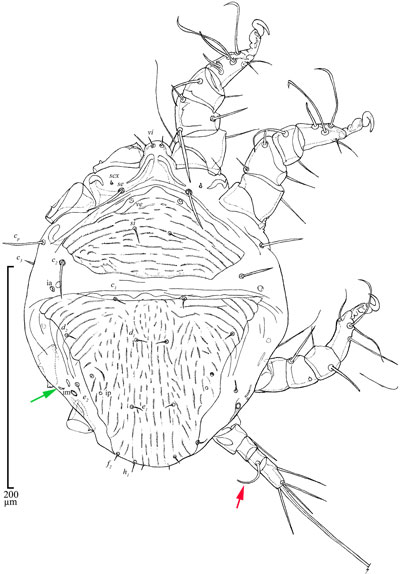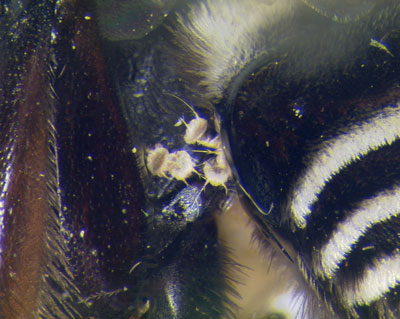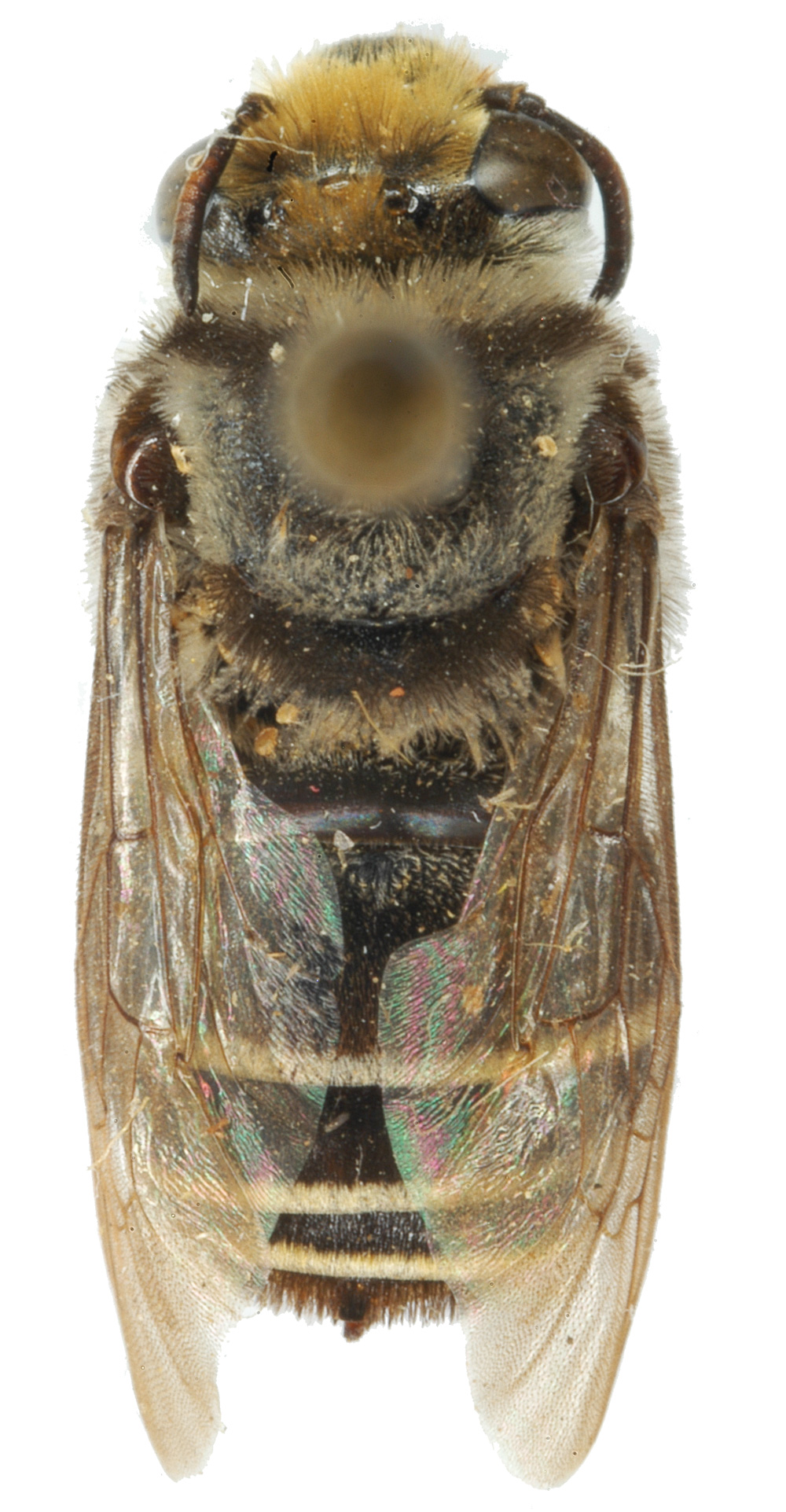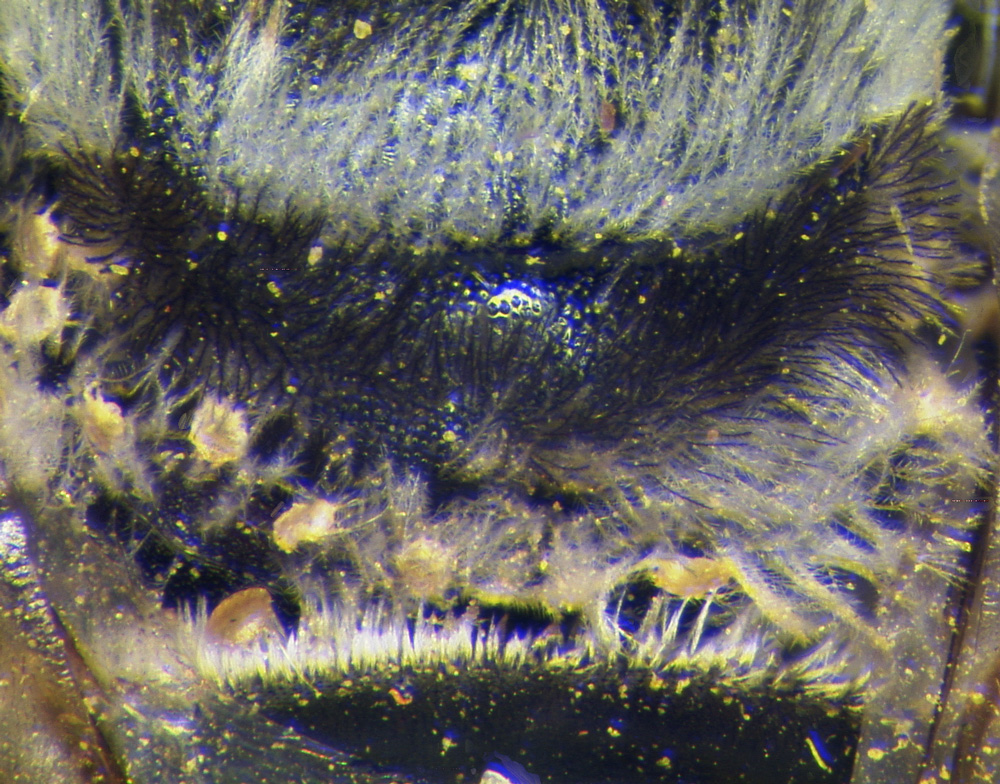Bee Mites :
Acari :
Acariformes :
Sarcoptiformes :
Chaetodactylidae : Chaetodactylus
Chaetodactylus melitomae Klimov and OConnor, 2007
Chaetodactylus sp. Linsley et al., 1980: 20 (specimens not examined, assigned to this species on basis of broad host range and geographic distribution of C. melitomae).
Chaetodactylus melitomae Klimov and OConnor, 2007: 821, Figs 10-11; Klimov et al., 2007: 1371; Klimov and OConnor, 2008: 113, Figs 52-53.
Material (show database records). Holotype: HDN - MEXICO: Tabasco, Cardenas, ex Melitoma sp. (propodeum), on Convolvulus (Solanales: Convolvulaceae), 26 Sep 1979, C. Hoffman, CUIC, BMOC 95-0422-013. Paratypes: 7 HDNs, same data as holotype; 1 HDN - Oaxaca, Temascal, ex Melitoma sp. (metepisternum), 18 Oct 1963, D.H. Janzen, UCD, BMOC 95-0613-038; 9 HDNs - Campeche, Candelaria, 38 m, Nov 1944, No collector, AMNH, BMOC 04-0508-299; 4 HDNs - Chiapas, 3.5 mi N Ixtapa, Rio Blanco, ex pollen mass from cell of Diadasia sp., Mar 1953, R. Smith, EMEC, BMOC 04-0702-001; 4 HDNs - HONDURAS: Yoro, El Progreso, ex Melitoma segmentaria (propodeum), 14 Mar 1923, T.H. Hubbell, UMMZ, BMOC 95-0310-005. Holotype in CUIC; paratypes in AMNH, CUIC, OSAL, UCD, UMMZ, UNAM.
Identification. Phoretic deutonymph (unique characters only). Lateral hysterosomal sclerites dorsal (Image Gallery, Fig. 2green arrow ), split into three small, separate sclerites, one of them posterior to cupule im, and two anterior. Solenidion φ IV (Image Gallery, Fig. 2 red arrow) longer than combined length of genu and tibia IV. Other stages unknown.
Hosts. Melitoma marginella, Melitoma segmentaria, Melitoma sp. (type host) (Apidae: Emphorini) (Linsley et al., 1980; our data). Also known from Diadasia sp. (possibly host misidentification or secondary contamination; voucher specimens of the host were not available for study).
Distribution (show map). Mexico: Campeche, Chiapas, Oaxaca, Tabasco (type locality); Honduras: Yoro.
Biology. Linsley et al. (1980) reported that 2.4% and 3.2% of the cells of Melitoma marginella examined at two sites in Chiapas, Mexico, contained heteromorphic deutonymphs of Chaetodactylus sp. nr. ludwigi. Given our collections of C. melitomae from Melitoma spp. from this region, we think Linsley et al. most likely observed this species. Those authors reported that most of these cells contained hundreds of mites, which appeared to have consumed all or substantial amounts of the pollen. The infested cells did not have fragments of bee eggs or larvae suggesting that the egg or young larva is also destroyed by the mites, or that the latter develop successfully only in cells in which oviposition did not take place. Since the deutonymphal stage is dependent upon phoretic transport from the cell in which it develops to a new cell where further development and reproduction occur, burrows of bees which arrange their cells in a series would seem to be suited to these mites. Bees emerging in cells lower down in the series would readily become contaminated if they pass through mite-infested cells (after Linsley et al., 1980).
References
Klimov, P. B. & B. M. OConnor. 2007. Ancestral area analysis of chaetodactylid mites (Acari: Chaetodactylidae), with description of new early derivative genus and six new species from the Neotropics. Annals of the Entomological Society of America.100: 810-829.
Klimov, P. B. & B. M. OConnor. 2008. Morphology, Evolution, and Host Associations of Bee-Associated Mites of the Family Chaetodactylidae (Acari: Astigmata), with a monographic revision of North American taxa. Miscellaneous Publications Museum of Zoology University of Michigan.199: 243.
Klimov, P. B., B. M. OConnor & L. L. Knowles. 2007. Museum specimens and phylogenies elucidate ecology' s role in coevolutionary associations between mites and their bee hosts. Evolution.61: 1368-1379.
Linsley, E. G., J. W. MacSwain & C. D. Michener. 1980. Nesting biology and associates of Melitoma (Hymenoptera, Anthophoridae). University of California Publications in Entomology.90: 1-45.
Image Gallery
B. OConnor and P. Klimov ©
Created: Mar 24, 2009
Last modified: 